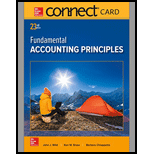
Introduction:
Ratio Analysis
• Ratio analysis is a study of several key metrics of a company based on the data presented in its’ financial statements with an objective to evaluate the financial health of a company.
• It is essential for investors, stakeholders, government bodies etc. to evaluate the key metrics of an entity in order to ensure that the company fulfills the going concern principle and displays financial stability.
The key metrics mentioned above include the following:
• Net Profit Margin – It is a measure of the total Profit earned from sales after deduction of operating expenses, selling and distribution expenses and other indirect costs.
• It is often the most sought after financial measure to evaluate profitability since it gives a clear indication of the
• Total Asset Turnover – A measure of the correlation between the Total assets employed and the turnover of the business.
• It seeks to evaluate the volume of sales in relation to the assets employed. It gives an indication of the sales in relation to the investment made in the assets and overall capital contribution to the company in the form of Assets.
• Return on Total Assets – A measure of the total
• It seeks to measure the return earned on the total assets i.e. the resources employed by the business to directly or indirectly increase revenue or reduce costs.
To Compute:
a) Profit Margin Ratio
b) Asset Turnover Ratio
c) Return on Total Assets for 2016 and 2017 and review the ratios.
Want to see the full answer?
Check out a sample textbook solution
Chapter 17 Solutions
Connect Access Card for Fundamental Accounting Principles
- Marvelous Manufacturing, Inc. had the highest total cost of $720,000 in August with a production volume of 15,000 units. Its lowest total cost was $550,000 in February with a production volume of 11,000 units. What is the fixed cost per month?arrow_forwardSubject - General accountarrow_forwardPlease explain the solution to this financial accounting problem using the correct financial principles.arrow_forward
- Please help me solve this general accounting question using the right accounting principles.arrow_forwardCan you explain the correct methodology to solve this general accounting problem?arrow_forwardWhat role does assurance boundary definition play in attestation? (a) Standard limits work always (b) Boundaries never matter (c) Engagement scope limits determine verification responsibilities (d) All areas need equal coverage MCQarrow_forward

 AccountingAccountingISBN:9781337272094Author:WARREN, Carl S., Reeve, James M., Duchac, Jonathan E.Publisher:Cengage Learning,
AccountingAccountingISBN:9781337272094Author:WARREN, Carl S., Reeve, James M., Duchac, Jonathan E.Publisher:Cengage Learning, Accounting Information SystemsAccountingISBN:9781337619202Author:Hall, James A.Publisher:Cengage Learning,
Accounting Information SystemsAccountingISBN:9781337619202Author:Hall, James A.Publisher:Cengage Learning, Horngren's Cost Accounting: A Managerial Emphasis...AccountingISBN:9780134475585Author:Srikant M. Datar, Madhav V. RajanPublisher:PEARSON
Horngren's Cost Accounting: A Managerial Emphasis...AccountingISBN:9780134475585Author:Srikant M. Datar, Madhav V. RajanPublisher:PEARSON Intermediate AccountingAccountingISBN:9781259722660Author:J. David Spiceland, Mark W. Nelson, Wayne M ThomasPublisher:McGraw-Hill Education
Intermediate AccountingAccountingISBN:9781259722660Author:J. David Spiceland, Mark W. Nelson, Wayne M ThomasPublisher:McGraw-Hill Education Financial and Managerial AccountingAccountingISBN:9781259726705Author:John J Wild, Ken W. Shaw, Barbara Chiappetta Fundamental Accounting PrinciplesPublisher:McGraw-Hill Education
Financial and Managerial AccountingAccountingISBN:9781259726705Author:John J Wild, Ken W. Shaw, Barbara Chiappetta Fundamental Accounting PrinciplesPublisher:McGraw-Hill Education





